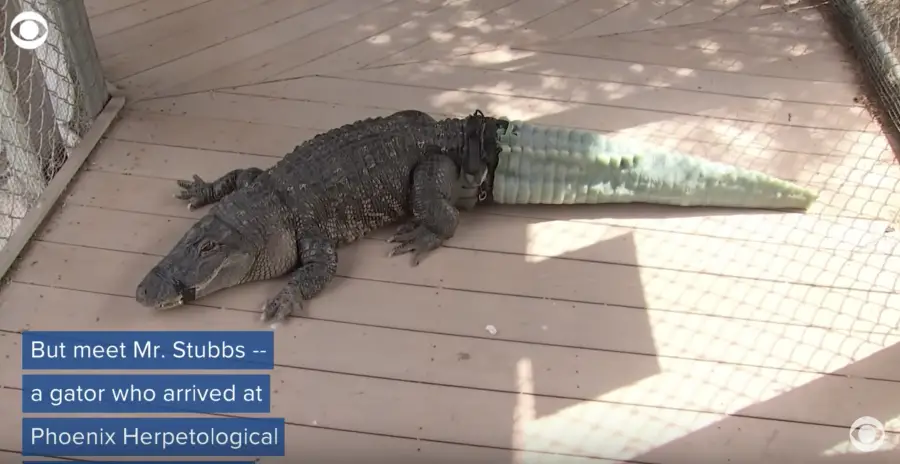After Alligator Lost Tail to Poachers, Scientists 3D-Printed Him a New One

By Amanda Froelich,
Meet Mr. Stubbs, an alligator who lost his tails approximately eight years ago. The incident occurred when the alligator was being illegally transported by animal traffickers. In 2013, Mr. Stubbs was found in the back of a semi-truck, along with other exotic animals. His rescuers took him to the Phoenix Herpetological Society. There, he was fitted with his first prosthetic tail. The appendage was made from the cast of a similarly-sized deceased alligator.
As National Geographic reports, the prothetic proved to be a bit clunky. This is because each alligator has a center of mass and buoyancy unique to itself. Mr. Stubbs didn’t have the easiest time moving around and eventually, grew out of this and subsequent artificial tails.
In the five years that have passed, technology has advanced significantly. This prompted Justin Georgi, an associate professor of anatomy at Midwestern University in Glendale, Arizona, to replace the tail of Mr. Stubbs. The master’s student was in search of a project and considers Mr. Stubbs to be a local legend.
Georgi collaborated with the local company STAX3D to use an Arctic 3D scanner. Their efforts resulted in a specialized appendage for Mr. Stubbs. “They got the resolution where features even below the millimeter scale were visible and usable,” said Georgi, who specializes in the locomotion of large-bodied reptiles. “Watching it happen there in real-time was incredible.”
Fortunately, Mr. Stubbs seemed to take to the 3D-printed prosthetic quickly. After wearing the appendage for five weeks, the alligator slapped one of the facility’s employees. Georgi’s first response was, “That’s wonderful!”. He added, “Of course I had to stop and ask if the volunteer was okay, too. But hearing that he was using that tail in a natural fashion was just a terrific and exciting landmark.”
The rescue alligator remains an important icon for many people, mainly due to his resilience. Some people told Georgi that witnessing the gator receive a new tail made them more comfortable with their own prosthetics. “That sort of thing [was] certainly secondary to the initial project of helping Mr. Stubbs, but it’s also absolutely wonderful to hear,” Georgi commented.
The potential applications for 3D printing are endless. In the future, the technology may be used to improve many people’s and animals’ lives. What are your thoughts? Please comment below and share this news!
I am Mike Sygula, founder of Truth Theory, I just launched my brand new Ebook titled: “Growth Hacking Tips And Rituals For Optimal Living” CLICK HERE TO GET YOUR FREE COPY
Credits: National Geographic CBS NEWS
Leave Comment: